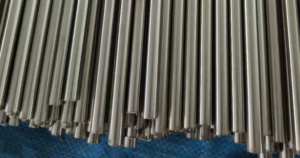In the realm of corrosion-resistant alloys, Hastelloy holds a prominent position, offering exceptional performance in various industrial applications. As a veteran in the field of metallurgy from Huaxiao Alloy, I have extensive experience with Hastelloy alloys and their diverse applications. However, when it comes to the most common Hastelloy, it is not a straightforward answer, as the choice often depends on the specific requirements of the application. Nevertheless, certain Hastelloy grades stand out as being more widely used than others.

What is the most common Hastelloy?
One of the most commonly encountered Hastelloy alloys is Hastelloy C-276. This nickel-molybdenum-chromium alloy is renowned for its excellent corrosion resistance in a wide range of environments, including those containing oxidizing acids, reducing acids, and chloride ions. Its robust corrosion resistance properties make it a prime choice for applications in the chemical processing, petrochemical, and pulp and paper industries.
The chemical composition of Hastelloy C-276 contributes significantly to its corrosion resistance. The high nickel content provides a stable oxide layer that protects the alloy from attack by corrosive agents. The addition of molybdenum and chromium enhances the alloy’s resistance to specific corrosive media, such as hydrochloric acid and sulfuric acid.
In addition to its corrosion resistance, Hastelloy C-276 also exhibits good fabricability and weldability. It can be easily formed and welded into various shapes and configurations, making it suitable for a wide range of manufacturing processes. This versatility allows Hastelloy C-276 to be used in a diverse set of applications, from piping systems to reactor vessels.
Another commonly used Hastelloy alloy is Hastelloy B-2. This nickel-molybdenum alloy is known for its resistance to hydrochloric acid and other reducing acids. It is often employed in applications where these acids are present, such as in the production of hydrochloric acid and the pickling of steel. The alloy’s high nickel content, combined with the addition of molybdenum, provides excellent corrosion resistance in these harsh environments.
Hastelloy B-2 also demonstrates good mechanical properties, including high tensile strength and ductility. This combination of corrosion resistance and mechanical strength makes it suitable for use in structural components that must endure both corrosive media and mechanical stress.
Both Hastelloy C-276 and Hastelloy B-2 are widely available in the market and are commonly stocked by material suppliers. Their popularity can be attributed to their reliability, performance, and ease of processing. However, it’s important to note that the choice of Hastelloy alloy should always be tailored to the specific requirements of the application. Different alloys may be more suitable for certain environments or conditions, and it is crucial to consult with a metallurgical expert or material supplier to ensure the selection of the most appropriate alloy.
In addition to Hastelloy C-276 and Hastelloy B-2, there are other Hastelloy grades that are also commonly used, such as Hastelloy X and Hastelloy B-3. Hastelloy X, for instance, is a nickel-chromium-iron alloy with excellent high-temperature strength and oxidation resistance, making it suitable for applications in high-temperature environments. On the other hand, Hastelloy B-3 offers high resistance to both reducing and oxidizing acids, making it a good choice for chemical processing applications involving mixed acid environments.
As the field of metallurgy continues to evolve, new Hastelloy alloys are being developed to meet the demands of increasingly complex industrial applications. However, the commonly used Hastelloy grades mentioned above have proven their worth over the years and remain the preferred choice for many industries.
Conclusion
In conclusion, while there is no single “most common” Hastelloy alloy, certain grades, such as Hastelloy C-276 and Hastelloy B-2, stand out as being widely used due to their excellent corrosion resistance, mechanical properties, and ease of processing. The choice of Hastelloy alloy should always be tailored to the specific requirements of the application, and it is essential to consult with metallurgical experts or material suppliers to ensure the selection of the most appropriate alloy for the job.
Thank you for reading our article and we hope it can help you to have a better understanding of the most common Hastelloy. If you are looking for Hastelloy suppliers and manufacturers online now, we would advise you to visit Huaxiao Alloy.
As a leading supplier of Hastelloy Alloys from Shanghai China, Huaxiao Alloy offers customers high-quality Hastelloy Alloy products such as Hastelloy C-276, Hastelloy C22, Hastelloy C2000, and Hastelloy B2 at a very competitive price.



